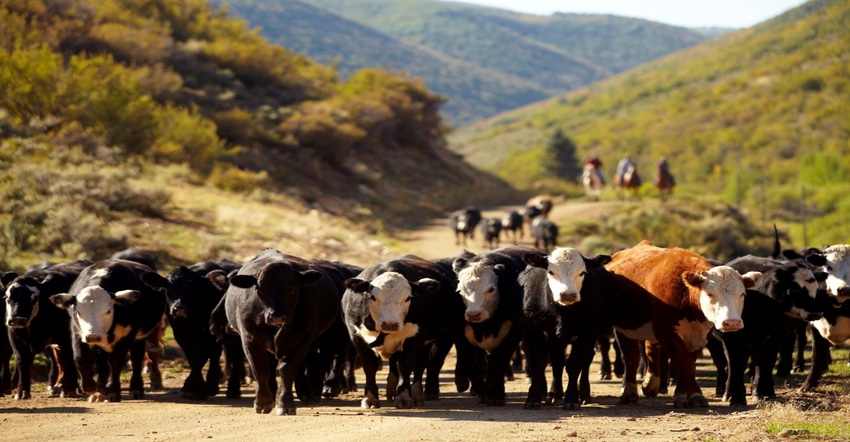The United States cattle herd is expected to keep dwindling into 2023.

As 2021 winds to a close, cattle markets seem to finally be able to move out from under the specter of the pandemic impacts that began 18 months ago. Indeed, the constant turmoil of a series of Black Swan events have kept the industry on the defensive for over two years.
The recent breakout of fed cattle markets after struggling under the weight of beef packer capacity constraints clears the way for cattle markets to move forward with the optimism that has been building in the industry in recent months.
There continues to be, of course, many challenges facing the cattle industry in 2022. COVID impacts are ongoing with much uncertainty; and U.S. and global economies will continue struggling with pandemic ripple effects for many months. Higher input prices will impact cattle operations and test better profitability prospects in the coming year.
Continuing drought is an ongoing threat and may impact the industry and many producers in affected regions. It is uncertain whether or how and where drought will affect the cattle industry in 2022. La Niña conditions have redeveloped this winter which may result in some relief in parts of northern regions while southwestern regions, that did see some improvement in 2021, could see redeveloping drought conditions. In drought regions, producers will continue to be on defense.
Despite these challenges, many producers may be able to spend more time looking forward in the coming year. Producers can evaluate and plan their individual objectives and goals while the industry figures out what the trajectory is for the next couple of years at least.
The beef cow herd has been declining since 2019 and declined even faster in 2021. It will decline again in 2022 and likely in 2023. However, strong domestic beef demand bolstered by even stronger demand and potential in international markets suggests that cyclical expansion could resume in the not-to-distant future. Exactly what the future path will be remains to be determined but producers should consider strategic and tactical plans for industry outcomes.
Winter is a good time to consider both animal and forage production and management plans for the coming year. Once calf marketing is complete and herd culling decisions are implemented, a relative down-time is ideal for a bit of review of the past year and planning for next year with a series of questions.
What are the conditions of pastures and rangeland going into the next growing season; should grazing plans or stocking rates be adjusted? Were production and reproductive rates and weaning weights as expected? What is the current body condition of the cows? What is the herd health status? Are upcoming herd nutritional needs evaluated and matched with feed and supplement resources? Planning now can help manage costs and production next year. Take time to consider these and other questions before the new year.
The industry has waited many months for a bit of relative stability. Are you ready to be on offense rather than defense? There will no doubt be adversity and producers must be prepared for risks and negative outcomes, but you also need to be ready to grab the opportunities that will come. The cattle industry can look forward to 2022.
Source: Derrell Peel, Oklahoma State University, which is solely responsible for the information provided and is wholly owned by the source. Informa Business Media and all its subsidiaries are not responsible for any of the content contained in this information asset.
About the Author(s)
You May Also Like



